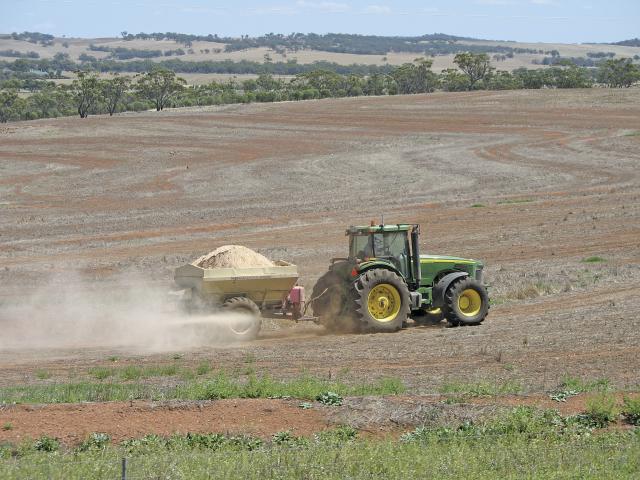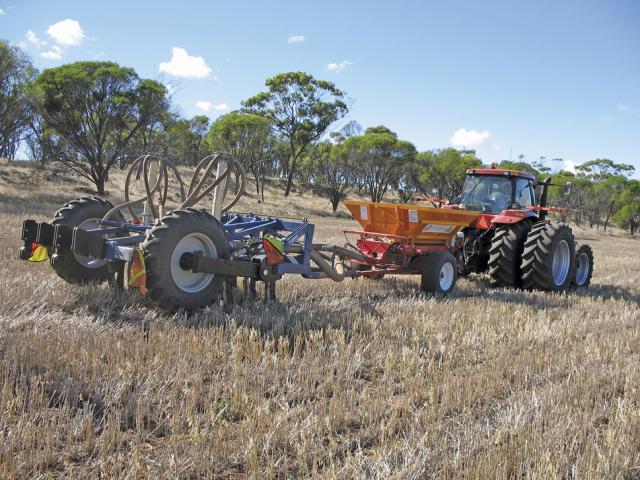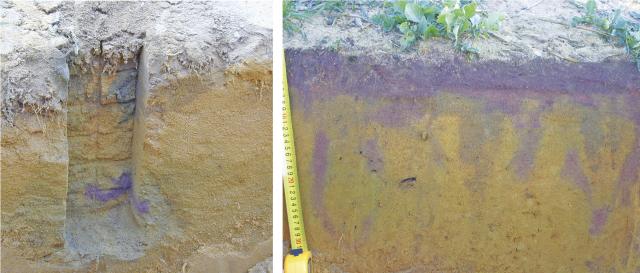Liming techniques
Whether liming to maintain or recover soil pH, surface application (at appropriate rates) is currently the recommended method for most situations (Figure 1). In time, sufficient surface application of lime will treat subsurface acidity.

Recently, incorporation of lime into the soil by mouldboard ploughing or rotary spading has shown promising results and can, if done appropriately, recover acidic subsurface soil to target pH rapidly. Rotary spading generally achieves a better distribution of lime through the soil profile than mouldboard ploughing, which buries the lime with the topsoil, leaving an acidic layer on the surface.
If you are ploughing or spading to remove another constraint, then it is worth considering the opportunity to incorporate lime to treat subsurface acidity. The risks, costs and returns need to be carefully evaluated before undertaking an expensive process such as ploughing or spading just to incorporate lime for quick recovery of acidic subsurface soil.
Good results have been achieved with deep placement of lime by direct injection using modified farm-scale machinery (Figure 2), but it is difficult and time-consuming to achieve the desired distribution, and ineffective and expensive if it is not achieved. Deep placement is only recommended for soils in which subsurface acidity is constraining production and, before it is attempted, detailed consideration should be given to whether it is likely to be profitable.
Surface application
The main aim when applying lime to the surface should be an even coverage of the ground. The spreading width should be approximately 6-8 metres (m) (depending on wind conditions) to get good coverage of fine particles (less than 0.5 millimetres (mm)). Spreading too wide results in uneven treatment of soil acidity. Larger particles will spread up to 15m but the effective distribution is poor and will result in variable change in pH.
Surface applied then deep-rip
It is good practice when applying lime to spread the lime prior to any soil disturbance such as deep-ripping, ploughing or spading. This enables better distribution of the lime particles and greater contact with the acidic soil. Liming before deep-ripping for compaction adds value to both treatments.
Direct injection
This technique deep-places lime during deep-ripping, using modified machinery (Figure 2). Research has shown that successful direct injection is possible (Figure 3 right) and subsurface acidity can be quickly removed as a production constraint. When the distribution of lime is correct, yield responses of 20-30% in wheat are common.
However, increased costs due to machinery modification and slow operation need to be considered. It is difficult to achieve adequate distribution of the lime. Poor distribution can result in the lime being placed below an untreated acidic layer (Figure 3, left), which continues to act as a barrier to root growth. Only where compaction is also a constraint, may direct injection be worth considering.



